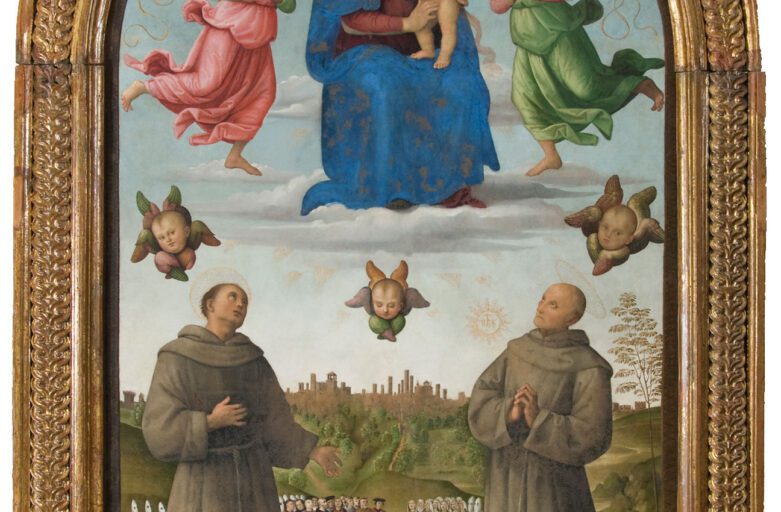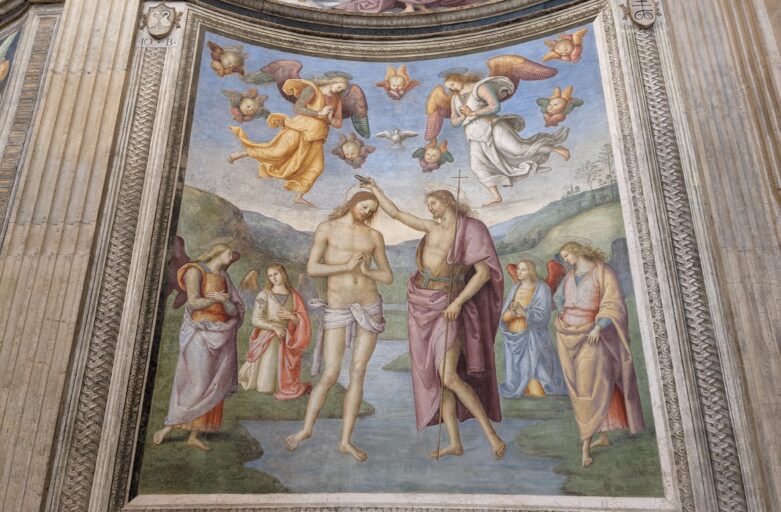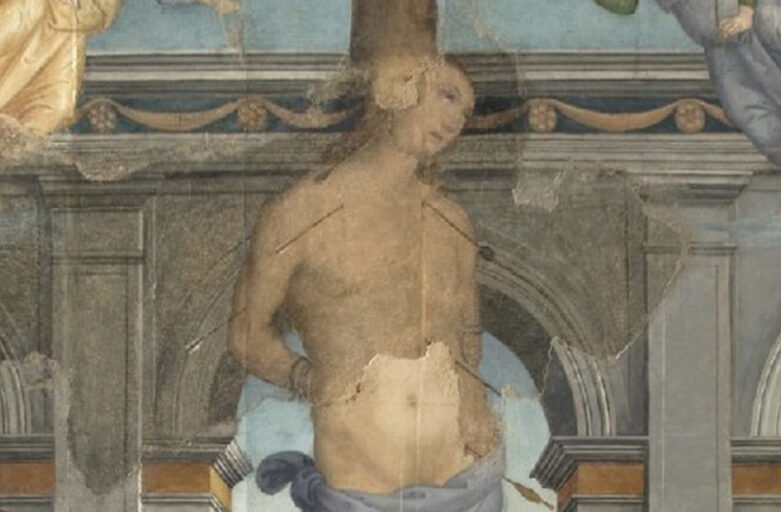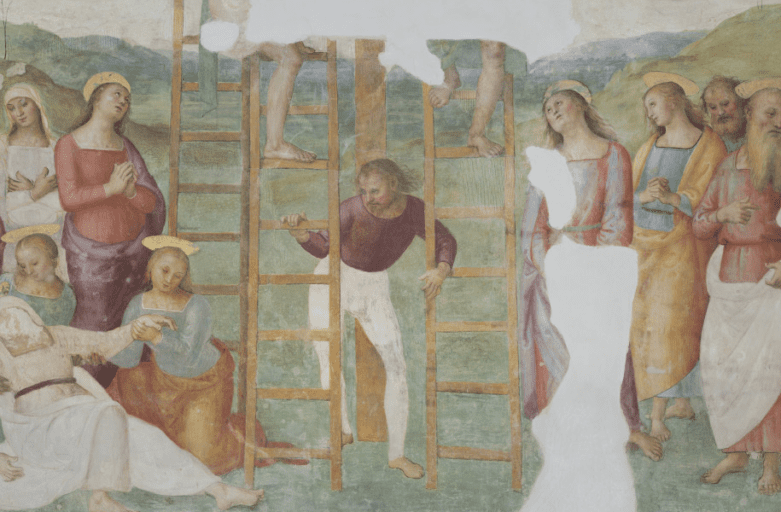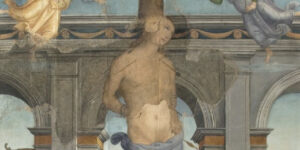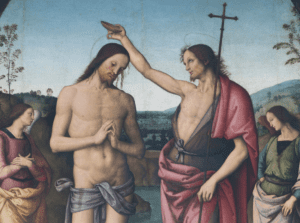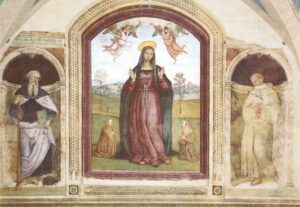The “Standard of Justice” in the National Gallery of Umbria
The Standard of Justice was painted by Perugino in 1496 or so, commissioned by the Brotherhood of Saint Bernardine in Porta Eburnea (the so-called “Ivory Gate” and nearby neighborhood) in Perugia.
A devotional painting
A gonfalone (religious standard) was a typically devotional work of art, whose elements were carefully chosen in every detail. Namely: in the upper part, a divine environment had to be shown; in the middle, the mediator saints; below, the faithful in prayer.
Structure
On the painted canvas of the Standard of Justice, the divine role in the upper part is played by Virgin Mary, seated upon the clouds, with the Infant Jesus in her arms. On her left and right sides, two angels are praying. Both their eyes and Mary´s look at the characters in the lower part, with an expression full of love. Their more specifically watch two kneeling figures set in the central area of the canvas: the Saints Francis of Assisi (left) and Bernardine of Siena (right). They both reciprocate Mary´s looks. Saint Francis, moreover, shows with his left hand the group of faithful in prayer.
Below them, in the background, the faithful are divided by gender: women on the right, men on the left. Some of them wear elegant clothes; some, white garments, and a hood of the same color. They indicate the different kinds of membership in the brotherhood.
Finally, the town of Perugia provides the general background. We can easily recognize the Palace of Priors with its squat bell tower; the Holy Angel´s Gate (i.e. Michael´s) on the far left of the painting, along with the many towers that characterized the town during the Middle Ages. Perugia is seen in perspective from Montemorcino Vecchio, the hill where the first Benedictine Olivetan monastery rose.
Commission, positioning, sponsorship
The Brotherhood of Saint Bernardine, who commissioned the standard, had been united with Saint Andrew´s; their new, shared seat in Perugia was the place in which the standard was first installed. The canvas was in fact set on the altar in the new oratorio (chapel) of the Saints Andrew and Bernardine, which was built after 1537 next to the older one, dedicated to Saint Bernardine and decorated by Agostino di Duccio.
The standard would remain in the brotherhood´s seat until 1879, when it was added to the town´s public collection. It is currently on exhibition at the National Gallery of Umbria.
The work had been financed by five florins from the Perugia Decemviri (“ten men”). It can be deduced by the two Griffins, the town´s symbol, painted in the lower part of the painting. There also was an inscription: publica liberalitate, “thanks to the authorities´ open-handedness,” but it vanished in the course of time.
Discover the testimonies of Perugino today
Routes and itineraries to discover the works of the divine painter
